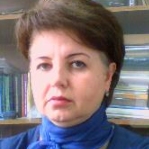International Journal of Modern Education and Computer Science (IJMECS)
IJMECS Vol. 12, No. 1, 8 Feb. 2020
Cover page and Table of Contents: PDF (size: 450KB)
Graphical Programming Environment for Performing Physical Experiments
Full Text (PDF, 450KB), PP.11-17
Views: 0 Downloads: 0
Author(s)
Index Terms
Physical experiment, graphical programming environment, the magnetic circuit law, data acquisition, teaching physics at university level
Abstract
This paper presents a way to improve physical experiments at the engineering university level using a graphical programming environment for data acquisition. As a case study it is presented the experimental verification of the law of the magnetic circuit. Such a working method for experimentation opens the way for the future engineer to study physical phenomena using the computer.
Cite This Paper
Mihaela Osaci, Corina Daniela Cunţan, " Graphical Programming Environment for Performing Physical Experiments", International Journal of Modern Education and Computer Science(IJMECS), Vol.12, No.1, pp. 11-17, 2020.DOI: 10.5815/ijmecs.2020.01.02
Reference
[1] E.Salako Adekunle, S. Adewale Olumide, K. Boyinbode Olutayo, “Appraisal on Perceived Multimedia Technologies as Modern Pedagogical Tools for Strategic Improvement on Teaching and Learning”, I.J. Modern Education and Computer Science, 8, pp.15-26, 2019.
[2] V. Gautam, R. Pahuja, “Web-enabled Simulated and Remote Control Virtual Laboratory of Transducer”, I.J. Modern Education and Computer Science, 4, pp.12-22, 2015.
[3] L. E. Alvarez-Dionisi, M. Mittra, R. Balza, “Teaching Artificial Intelligence and Robotics to Undergraduate Systems Engineering Students”, I.J. Modern Education and Computer Science, 7, pp.54-63, 2019.
[4] G. Kalpachka, “Computer Modeling and Simulations of Logic Circuits”, I.J. Modern Education and Computer Science, 12, pp.31-37, 2016.
[5] C. D. Cunţan, I. Baciu, M. Osaci, “Studies on the Necessity to Integrate the FPGA (Field Programmable Gate Array) Circuits in the Digital Electronics Lab Didactic Activity”, I.J. Modern Education and Computer Science, 6, pp. 9-15, 2015.
[6] C.Elliotte, V.Vijayakumar, W.Zink, R. Hansen, “National Instruments LabVIEW: A Programming Environment for Laboratory Automation and Measurement”, Journal of the Association for Laboratory Automation, vol. 12, 1, pp. 17-24 , 2007.
[7] C. J. Kalkman, “LabVIEW: A software system for data acquisition, data analysis, and instrument control”, Journal of Clinical Monitoring, Volume 11, Issue 1, pp. 51–58, 1995.
[8] C. A Butlin, “Using National Instruments LabVIEW Education Edition in schools”, Physics Education, Vol. 46, 4, 2011.
[9] E. Lunca, S. Ursache, A. Salceanu, “LabVIEW Interactive Simulations for Electromagnetic Compatibility”, International Journal of Online Engineering, 8(2), 2012.
[10] H. M. A. Mageed, A. M. El-Rifaie, “Open Access Electrical Metrology Applications of LabVIEW Software”, Journal of Software Engineering and Applications, 6, pp. 113-120, 2013.
[11] N. N. Barsoum, P. R. Chin, “Ethernet Control AC Motor via PLC Using LabVIEW”, Intelligent Control and Automation, 2, pp.330-339, 2011.
[12] M.Hamel, H.Mohellebi, “A LabVIEW-based real-time acquisition system for crack detection in conductive materials”, Mathematics and Computers in Simulation, Volume 167, pp. 381-388, 2020.
[13] S. Bhat, H. K. Verma, P. Kumari, “Development of Virtual Resistance Meters using LabVIEW”, International Journal of Electrical and Computer Engineering 8(1), pp.133, 2018.
[14] Y. Khazri, A.AL Sabri, B. Sabir, H. Toumi, M. Moussetad, A. Fahli, “Remote Control Laboratory Experiments in Physics using LabVIEW”, International Journal of Information Science & Technology, Vol.1 No. 1, 2017.
[15] I. Orquín, M. A. García-March, P. Fernández de Córdoba, J. F. Urchueguía Schölzel, J. A. Monsoriu, “Introductory quantum physics courses using a LabVIEW multimedia module”, Computer Application in Engineering Education, Volume15, Issue2, pp. 124-133, 2007.
[16] F.T. Ulaby, “Electromagnetics for Engineers”, publisher Upper Saddle River, New Jersey: Pearson, 2005
[17] N.E. Lehner, Günther, “Electromagnetic Field Theory for Engineers and Physicists”, publisher Springer-Verlag Berlin AND Heidelberg Gmbh & Colorado. KG, 2010
[18] https://www.alldatasheet.com/datasheet-pdf/pdf/533072/HONEYWELL/HMC5983.html
[19] https://www.ni.com/ro-ro/support/model.myrio-1900.html
[20] http://www.ni.com/academic/myrio/project-guide-vis.zip

